
Roots
To walk the path of textured hair care, to truly appreciate its vitality and resilience, we must first understand its deepest connections—its roots, not just within the follicle, but within the very earth and the hands that worked it across generations. For too long, the narrative of textured hair has been shaped by external standards, yet its true story is a powerful one of ancestral practices, of ingenuity born from profound connection to natural elements. Among these, humble clay stands as a quiet yet potent elder, a testament to inherited wisdom.
How does ancestral clay protect textured hair? This question is more than a scientific query; it is an invitation to explore a legacy, a deep breath into the soulful archive of strand care.
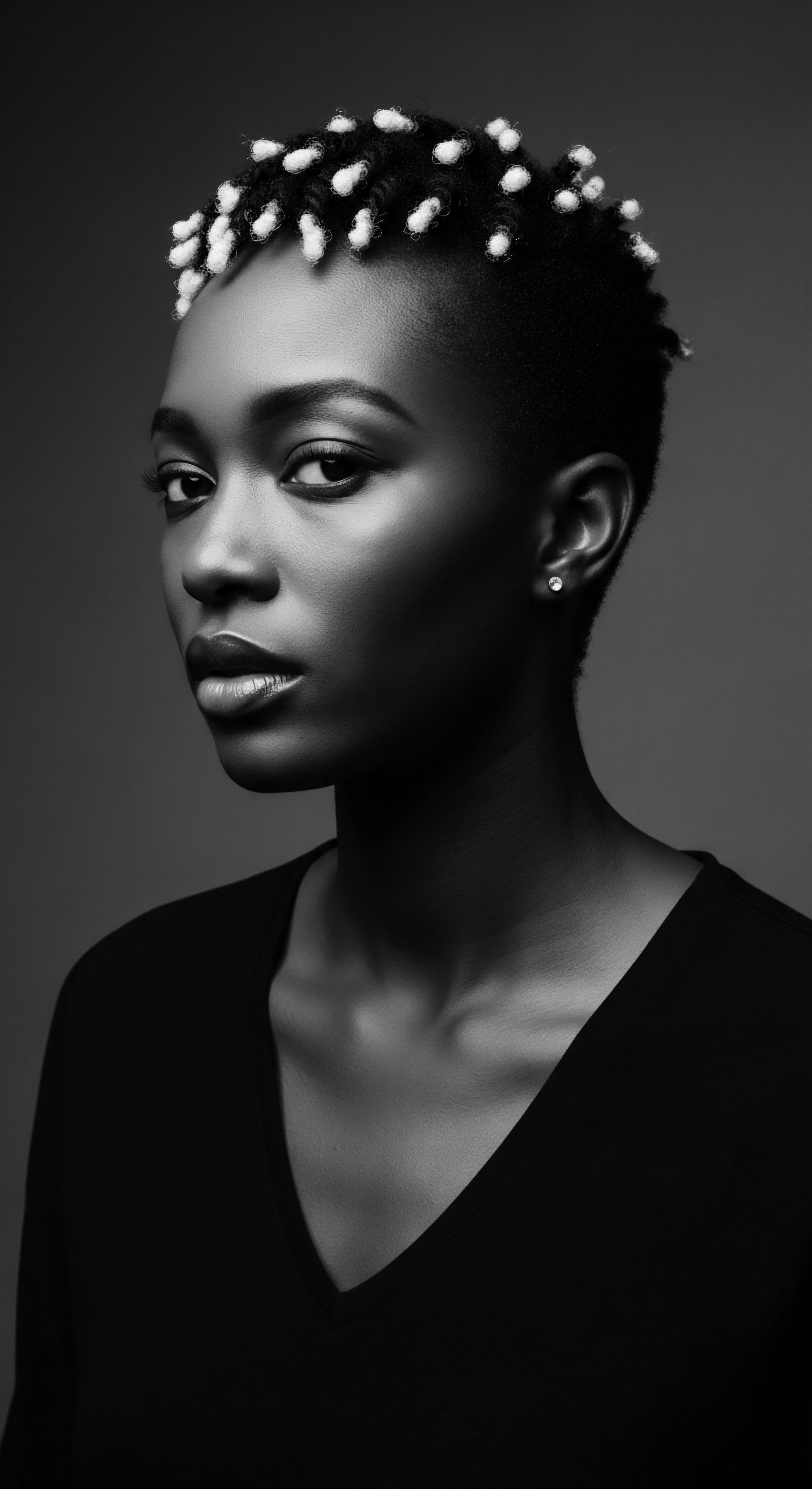
Hair’s Elemental Structure and Clay’s Ancient Touch
Textured hair, with its unique coiling and bending patterns, possesses a distinct anatomical blueprint. Its elliptical shape and varied curl patterns influence how light reflects, how moisture behaves, and how external stressors impact its integrity. Unlike straight hair, the cuticle layers, which serve as the hair’s outer shield, do not lie as flat, leaving the hair more susceptible to moisture loss and external damage. The very structure that lends it such profound beauty also calls for intentional care, a care that our ancestors understood with an intimacy modern science now seeks to unpack.
For millennia, communities around the globe turned to the earth’s bounty for sustenance, for shelter, and for wellness. Clays, these mineral-rich sediments, were among the earliest ingredients in human care practices. Their presence in hair care traditions spans continents and cultures, long predating commercial shampoos.
Consider the deep heritage of the Himba tribe in Namibia, whose women are renowned for their distinctive “otjize” paste—a mixture of red ocher clay, butterfat, and aromatic resins. This blend, applied daily, acts as a protective barrier against the harsh desert sun and dry winds, simultaneously cleansing and conditioning the hair, aiding in detangling, and lending a rich, reddish hue to their coils.
Ancestral clay offers textured hair protection through its mineral composition and its historical use as a cleansing and conditioning agent.
The core principle behind clay’s efficacy rests in its mineral composition and its unique ionic charge. Clays like bentonite and rhassoul are particularly notable. Bentonite Clay, for instance, possesses a strong negative charge. Our hair, and the impurities that cling to it—from environmental pollutants to product buildup—often carry a positive charge.
The clay acts as a natural magnet, drawing out these positively charged elements through an ion exchange process, effectively purifying the hair and scalp without stripping natural oils. This process is akin to the earth breathing in and cleansing itself, a gentle yet potent detoxification.

The Language of Hair ❉ Ancestral Terms, Modern Understanding
Understanding the very words used to describe textured hair and its care through time provides a window into its valued place within communities. Before modern classification systems, ancestral terms often centered on the hair’s appearance, its texture, or its spiritual significance. These descriptions, though not scientific in the contemporary sense, carried deep communal understanding.
Rhassoul clay, for instance, a staple in North African traditions, takes its name from an Arabic word that translates to “to wash.” This simple naming speaks volumes about its primary, enduring purpose. It highlights a time when cleansing was a deeply rooted ritual, often with communal and ceremonial aspects. The act of applying earth to hair was not merely hygienic; it was a connection to source, a ritual of grounding.
The application of clay works with the hair’s inherent structure. Textured hair often exhibits high porosity, meaning its cuticles are more open, allowing moisture to enter and leave quickly. This also makes the hair more prone to tangling and breakage. Certain clays, when mixed with water, form a soft, pliable paste that can coat the hair strands, creating a temporary barrier.
This film helps to smooth the cuticle, reducing friction between strands and thus lessening tangles. The minerals in clay, such as Silica, Magnesium, and Calcium, are deposited onto the hair, offering a strengthening effect that supports the hair’s natural elasticity.
| Clay Type Rhassoul (Ghassoul) |
| Traditional Region of Use North Africa (Morocco) |
| Noted Hair Benefit from Ancestral Practice Purifying, cleansing, softening, shine, detangling |
| Clay Type Bentonite |
| Traditional Region of Use Various, including Indigenous American uses |
| Noted Hair Benefit from Ancestral Practice Drawing impurities, scalp cleansing, anti-fungal properties, detangling |
| Clay Type Kaolin (White Clay) |
| Traditional Region of Use Global, including ancient China, Europe |
| Noted Hair Benefit from Ancestral Practice Gentle cleansing, oil absorption, scalp soothing |
| Clay Type These ancient earth compounds were chosen not just for cleansing, but for their ability to nurture and protect hair structures across diverse climates and cultural landscapes. |
The mineral content of these clays is not incidental. They contain a wealth of elements that are known to support biological functions. For instance, Silicon contributes to hair strength and elasticity.
Magnesium helps reduce scalp buildup and promotes an environment for healthy growth. These are not modern discoveries but ancient observations, passed down through generations who intuitively understood what the earth provided for their hair’s well-being.

Ritual
The application of ancestral clay transcends a simple cleansing; it is a ritual, a connection to practices that shaped how textured hair was cared for, adorned, and celebrated across time. The knowledge embedded in these traditions speaks to an understanding of hair not as an isolated entity, but as a living part of the body, deeply intertwined with identity and community. How does ancestral clay become a part of these significant hair care practices, influencing styling and protecting textured hair? The answers lie within the wisdom of the hands that worked the earth’s gifts, translating raw material into protective art.
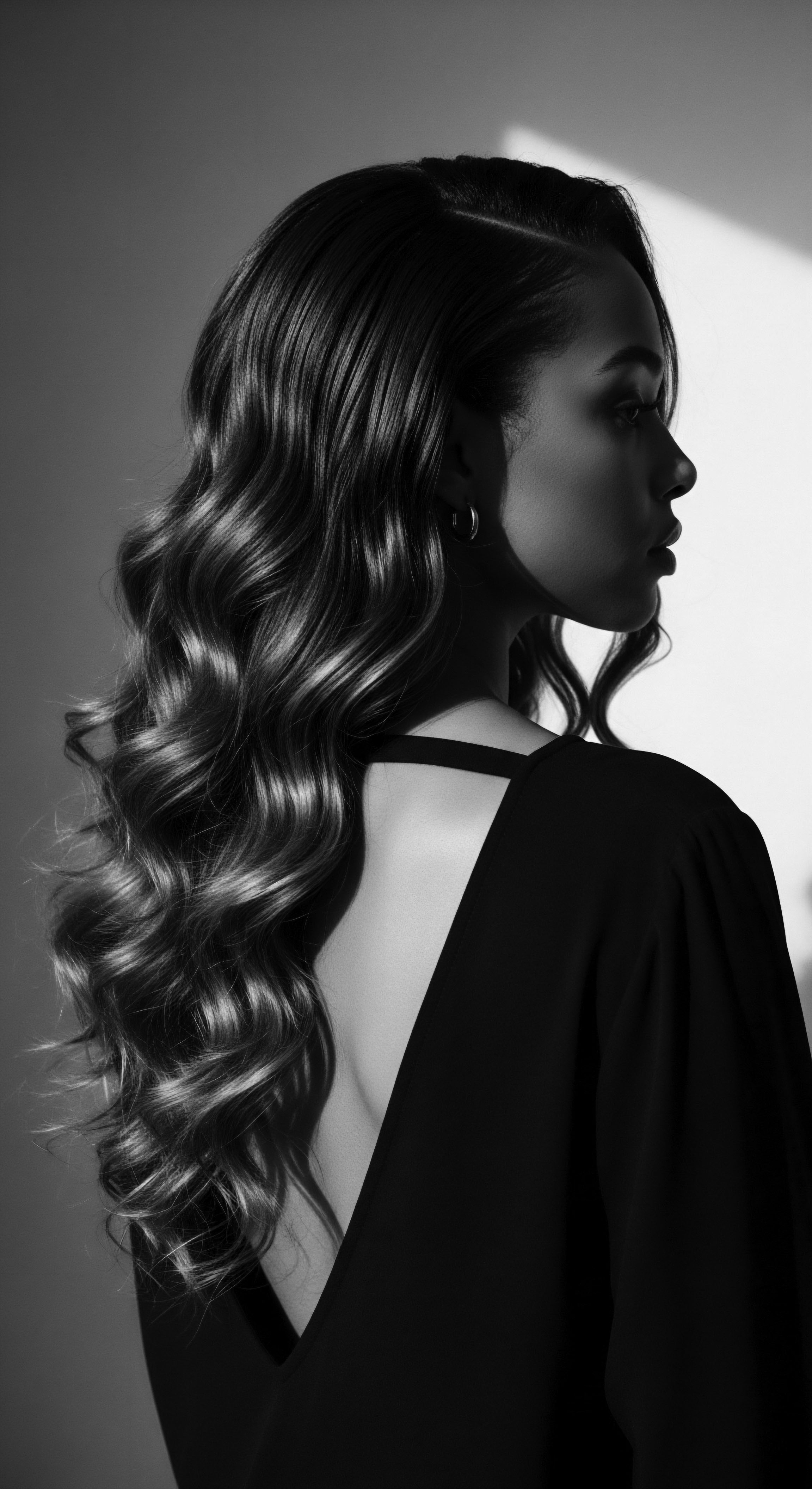
Protective Styling ❉ A Heritage of Clay and Coils
Protective styling for textured hair is a heritage practice, designed to shield delicate strands from environmental aggressors and reduce manipulation, thereby minimizing breakage. From cornrows that mapped escape routes during enslavement to elaborate coiled styles adorned with precious materials, hair has always served as a canvas for resilience and cultural expression. Ancestral clays played a discreet yet significant role in enhancing the protective qualities of these styles.
In the arid regions of Africa, certain clays were mixed with oils or plant extracts to create pastes that could be applied directly to hair before braiding or twisting. This clay paste would form a physical barrier, coating the hair shaft and protecting it from dust, sun exposure, and moisture evaporation. The Himba people, mentioned earlier, illustrate this beautifully.
Their otjize mixture, rich in ocher clay, does not merely color the hair; it seals the strands, creating a natural shield against the intense desert climate. This physical barrier reduces friction between hair strands and external elements, lessening the likelihood of mechanical damage and moisture loss, especially relevant for textured hair with its naturally open cuticle.
The practice of using clay in hair care rituals embodies a timeless wisdom that protects and sustains textured hair across generations.
Beyond physical protection, the clay also contributed to the longevity and integrity of these styles. By absorbing excess oil and impurities from the scalp, the clay helped to keep the scalp clean, extending the time between washes and preserving the freshness of the intricate styles. This was particularly important in environments where water might be scarce, making frequent washing impractical. It was a holistic approach, ensuring both scalp health and hair preservation.

Traditional Cleansing ❉ Clay as a Gentle Purifier?
Before the advent of synthetic surfactants, earth’s gifts were the primary cleansing agents. The question arises ❉ how did ancestral clay effectively cleanse and purify hair without stripping its natural oils, a common challenge for textured hair? The answer lies in the unique properties of various clays.
Rhassoul Clay, sourced from the Atlas Mountains of Morocco, has been used as a natural washing agent for skin and hair for centuries. Its particular mineral composition, high in magnesium and silica, gives it a remarkable ability to swell when mixed with water, creating a soft, almost slippery paste. This paste gently lifts impurities, excess sebum, and environmental pollutants from the hair and scalp without disrupting the hair’s natural moisture balance. Unlike harsh detergents that can strip the hair of its protective lipid layer, rhassoul clay works by adsorption, drawing substances to its surface and allowing them to be rinsed away.
For individuals with oily scalps, kaolin clay served as a mild yet effective solution. Its absorbent properties help regulate sebum production and soak up excess oil from the scalp and hair. This gentle nature makes it suitable for various hair types, including those prone to dryness, by preserving the hair’s inherent moisture. The use of these clays demonstrates an intuitive understanding of hair chemistry, long before modern laboratories defined it.
- Rhassoul ❉ Used for centuries in North Africa as a body and hair wash, renowned for its purifying and softening properties.
- Bentonite ❉ Applied for its drawing properties, capable of attracting and removing impurities from the scalp and hair.
- Kaolin ❉ A softer clay, used for gentle cleansing and oil absorption, particularly for sensitive scalps.
The methods of preparing these clay washes also varied by tradition. Some involved simply mixing the powdered clay with water to form a creamy paste. Others incorporated additional plant materials—herbs, flower waters, or even oils—to enhance the cleansing, conditioning, or aromatic qualities of the wash. This customization speaks to a deep, experiential knowledge of the ingredients and their synergistic effects, passed down through oral tradition and lived practice.
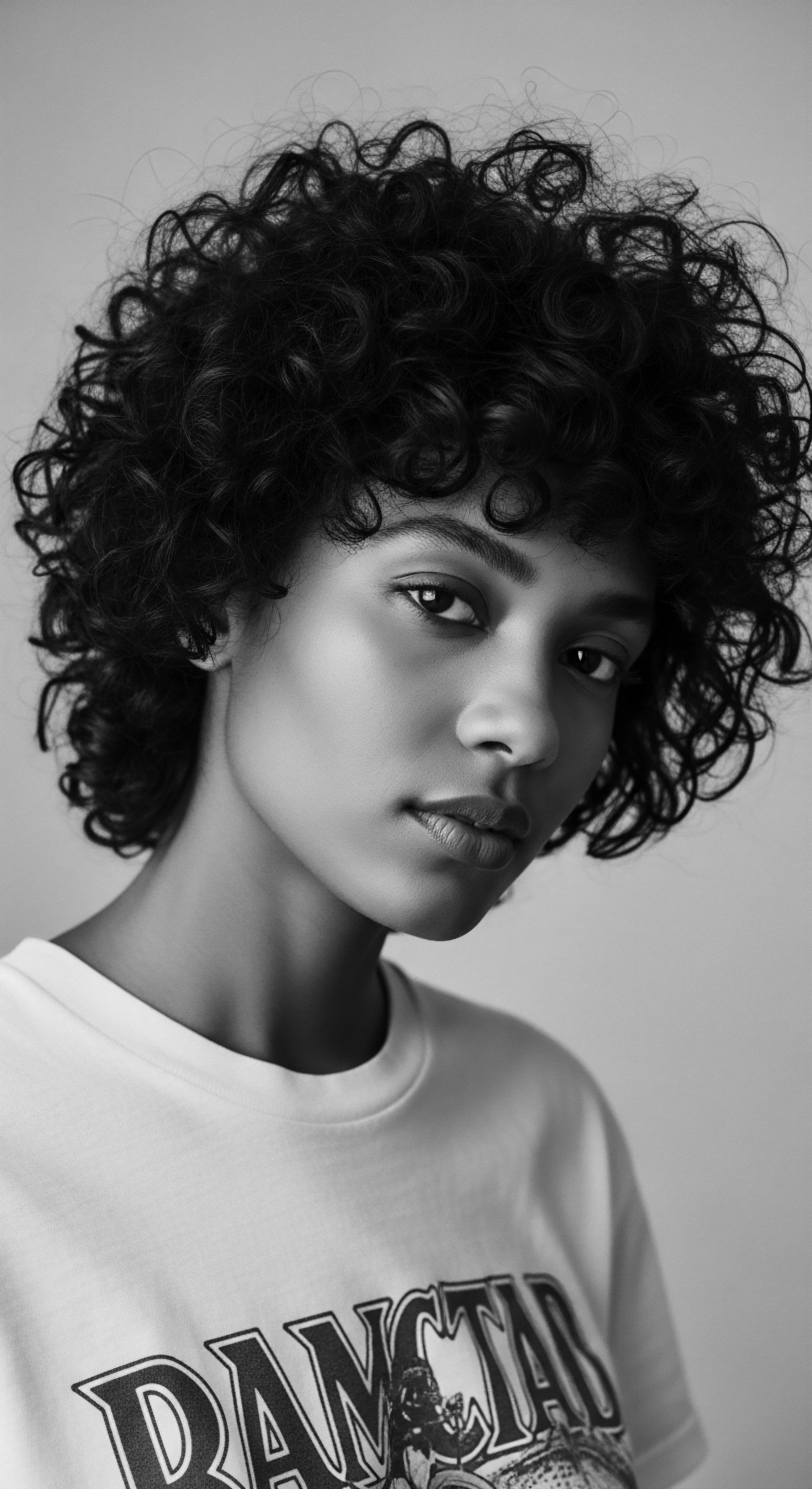
What Role Did Clay Tools Play in Ancestral Hair Styling?
The relationship between clay and textured hair extended beyond direct application to the tools used in its care and styling. While archaeological evidence for specialized hair-styling clay tools from ancient textured hair cultures is less widely documented than for other materials like bone or wood, the very act of working with clay—for pottery, for adornment—would have familiarized ancestral hands with its malleability and drying properties.
Consider, for a moment, the widespread use of baked clay curlers in 18th-century Europe, recovered from sites like George Washington’s Ferry Farm, though primarily for wigs. This demonstrates an understanding of clay’s ability to hold shape and impart form to hair through drying. While not directly linked to textured hair heritage, it suggests a broader historical human ingenuity in utilizing earth materials for hair manipulation.
It is plausible that clay, either as a paste or perhaps as a component in hair-setting formulations, contributed to the stability of elaborate ancestral hairstyles. As the clay dried, it would have offered a natural hold, allowing complex braids, coils, or sculpted looks to maintain their form for extended periods, enduring daily life or ceremonial events. The tactile knowledge of how clay responded to moisture and heat, so central to pottery, would have informed its application in hair.

Relay
The enduring story of ancestral clay and textured hair reaches us today through a relay of knowledge, passed from ancient hands to modern understanding. This transfer is not merely about preserving historical facts; it is about recognizing profound scientific principles that underpinned ancestral practices, often intuitively understood long before laboratory analysis could confirm them. The protection offered by earth’s bounty speaks to a deep attunement with nature, a wisdom we can still learn from. How does the chemistry of ancestral clay, combined with historical application methods, provide long-term protection for textured hair?

Clay’s Molecular Mechanism ❉ A Protective Shield
At its core, clay’s protective qualities stem from its unique mineral structure. Clays are composed of layered silicate minerals, primarily aluminosilicates, which give them a significant surface area and a distinctive charge. Bentonite Clay, for example, is rich in montmorillonite and possesses a remarkable cation exchange capacity. This means it has a net negative charge that allows it to attract and bind positively charged ions, including environmental toxins, heavy metals, and product residues that accumulate on hair strands and the scalp.
When mixed with water, clay particles swell, forming a colloidal suspension. As this suspension is applied to hair, the clay particles coat the strands. Upon drying, the clay contracts, physically absorbing surface impurities and excess oils.
This cleansing action is gentle yet effective, vital for textured hair that often struggles with dryness and needs its natural lipid barrier preserved. This mechanical removal of buildup, without harsh surfactants, helps to keep the hair follicles clear, promoting a healthy environment for growth.
The presence of specific minerals within clays also contributes directly to hair’s structural integrity. Silica, a component abundant in clays like rhassoul, plays a role in strengthening hair and reducing breakage. Magnesium, also present in many cosmetic clays, can help counteract calcium buildup on the scalp, which can hinder hair health.
A study published in the Journal of Cosmetic Dermatology highlighted that mineral-rich clays contribute to strengthening hair and improving its elasticity, noting a reduction in breakage by up to 70%. This scientific validation echoes the long-held anecdotal observations of ancestral communities regarding clay’s ability to impart strength and resilience to textured hair.

Environmental Defense ❉ How Did Clay Shield Textured Hair from the Elements?
Textured hair, with its exposed cuticle dueuses and natural moisture challenges, is particularly vulnerable to environmental stressors ❉ intense sun, dry winds, and atmospheric pollutants. Ancestral communities lived in direct communion with their environment and developed ingenious methods to counter these challenges. Clay emerged as a primary line of defense.
The application of clay pastes acted as a physical shield against ultraviolet (UV) radiation. Certain clays, particularly those rich in iron oxides, possess natural UV-reflecting and absorbing properties. The Himba women’s use of red ocher clay in their otjize paste serves as a compelling case study.
This practice, going back generations, is not just aesthetic; it is a critical protective measure against the harsh sun of the Namibian desert. The clay literally forms a barrier, reflecting harmful rays before they can degrade the hair’s melanin or structural proteins.
Moreover, clay helped to mitigate moisture loss in dry or windy climates. Textured hair’s tendency to lose water quickly means it benefits from practices that seal in hydration. The clay paste, once dried on the hair, created a thin, occlusive layer that slowed down the rate of water evaporation from the hair shaft.
This acted as a natural humectant and sealant, helping hair retain the moisture it needed to remain pliable and less prone to breakage. This deep-seated understanding of environmental interaction, and clay’s role within it, forms a crucial part of textured hair heritage.
| Ancestral Observation (Heritage) Cleanses scalp gently, without stripping. |
| Scientific Explanation (Modern Understanding) Clay's negative charge attracts positive impurities; absorbs excess oil via adsorption; avoids harsh surfactants. |
| Ancestral Observation (Heritage) Strengthens hair and reduces breakage. |
| Scientific Explanation (Modern Understanding) Minerals like silica and magnesium deposit on hair, supporting protein structures and improving elasticity. |
| Ancestral Observation (Heritage) Protects from sun and harsh weather. |
| Scientific Explanation (Modern Understanding) Forms a physical barrier; iron oxides in clay offer natural UV reflection/absorption. |
| Ancestral Observation (Heritage) Aids in detangling and adds manageability. |
| Scientific Explanation (Modern Understanding) Clay's smooth texture and ability to coat strands reduce friction, smoothing the cuticle. |
| Ancestral Observation (Heritage) The enduring efficacy of ancestral clay treatments is continually validated by contemporary scientific analysis. |

How Does Clay Interact with Hair Porosity and Scalp Health?
The unique porosity of textured hair—its tendency to quickly absorb and release moisture due to raised cuticles—makes it particularly responsive to clay treatments. For low porosity hair, which resists moisture entry and is prone to product buildup, bentonite clay’s drawing properties can be particularly beneficial. It helps to clarify the scalp and strands, removing the layers that prevent effective moisture absorption. Conversely, for high porosity hair, which readily absorbs but also loses moisture, clays can help to smooth the cuticle and reduce the rate of moisture evaporation when rinsed, preparing the hair to better retain subsequent conditioning.
Scalp health is paramount for strong hair growth, a principle deeply rooted in ancestral wellness philosophies. Clays possess antimicrobial and anti-inflammatory properties, which contribute to a balanced scalp environment. They can soothe irritation, reduce flaking, and help manage conditions like dandruff, by absorbing excess sebum and purifying the skin. This emphasis on a healthy scalp, nourished by the earth, is a testament to the holistic approach to beauty that has been passed down through generations.
The careful preparation of clay, often involving specific herbs and waters, further customized its interaction with the hair and scalp. In North Africa, the traditional preparation of rhassoul clay involved washing raw powder with orange fruit flowers, lavender, myrtle, and chamomile. These additions would infuse the clay with additional therapeutic properties, enhancing its ability to soothe, cleanse, and condition, showcasing a sophisticated botanical knowledge integrated with earth’s minerals.
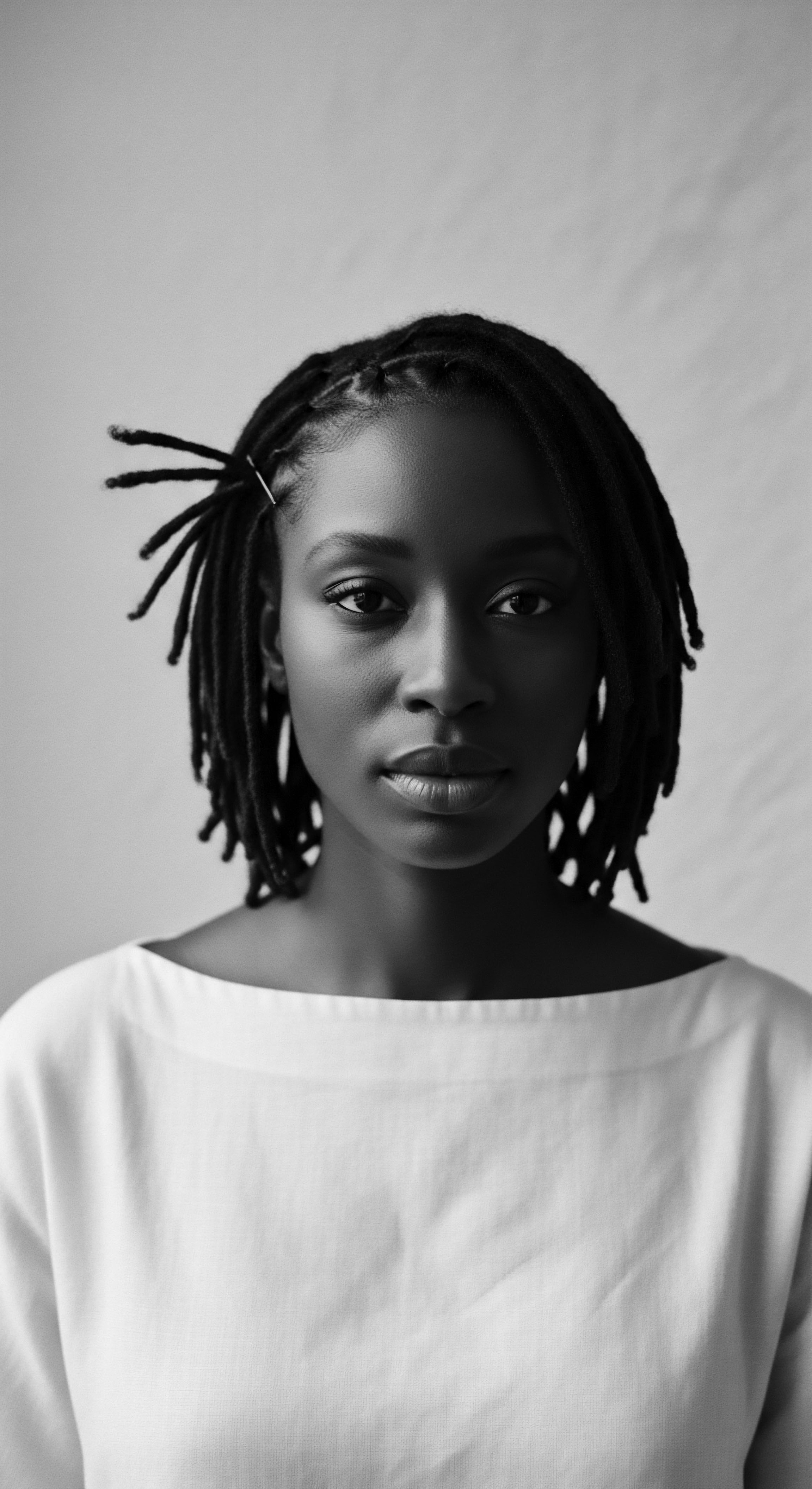
Reflection
The very ground beneath our feet holds stories of protection, of cleansing, of care, whispered through generations of textured hair. Ancestral clay, in its quiet power, embodies a legacy that speaks volumes about ingenuity, connection to nature, and the profound wisdom inherent in observing the earth’s offerings. It stands as a living testament to a ‘Soul of a Strand’ ethos, revealing how deeply our hair is entwined with who we are, where we come from, and the knowledge that shaped our collective heritage.
The journey through clay’s protective qualities for textured hair is a return to source, a recognition that the most powerful solutions often lie in the elemental, in what has been present and utilized for millennia. It calls upon us to look beyond fleeting trends and to honor the deep lineage of care that has preserved and celebrated textured hair in its many forms. This isn’t just about a mineral protecting a hair shaft; it is about the enduring spirit of resilience, beauty, and inherited wisdom. The practices of the past, grounded in the earth, continue to offer profound lessons for our present and future hair journeys.
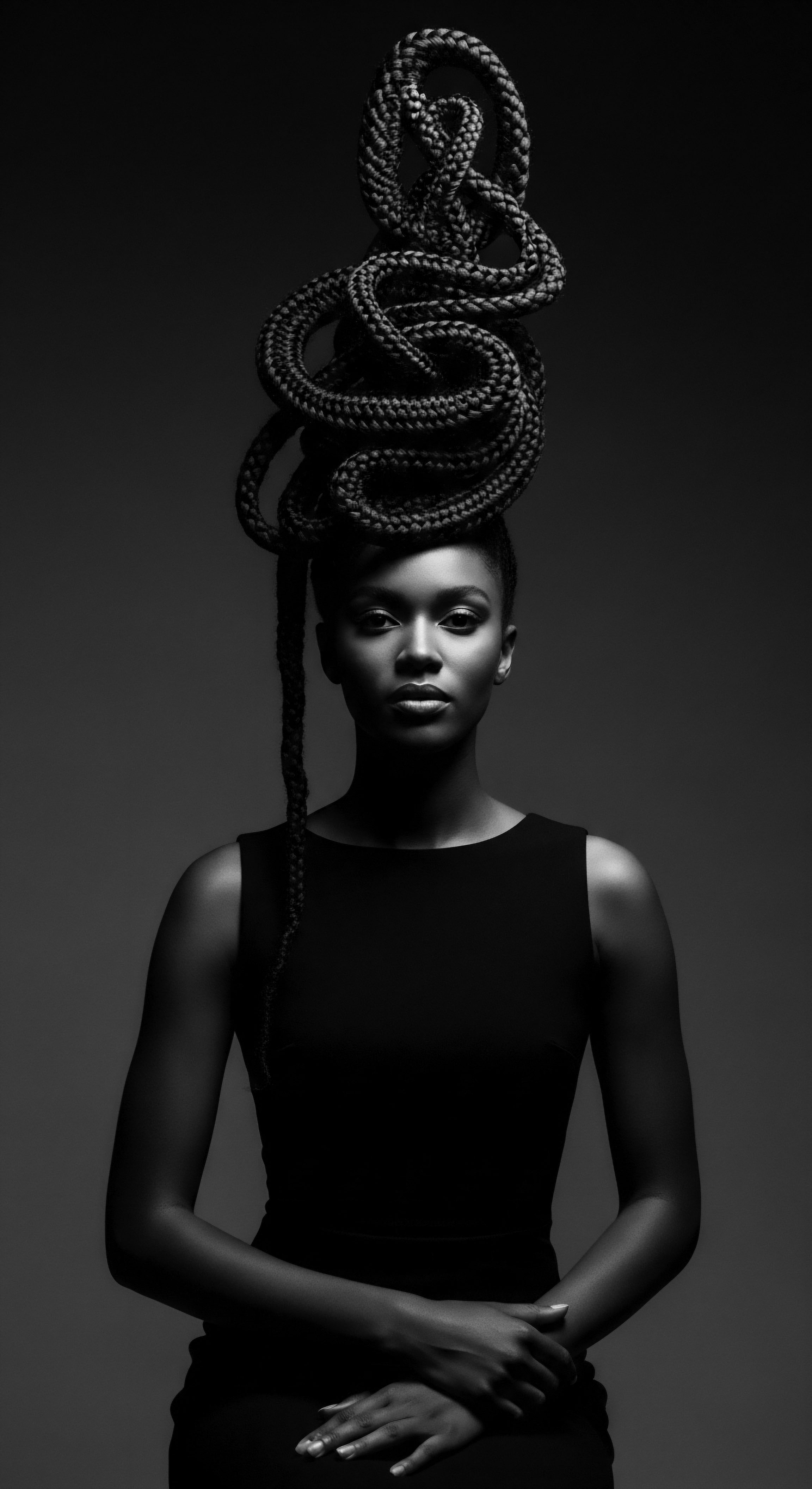
References
- Clinikally. (2025, February 20). Bentonite Clay Hair Mask ❉ The Natural Way to Detox and Revive Your Hair.
- 22 Ayur. (n.d.). The Ancient Natural Ways of Hair Care Across Continents.
- Afriklens. (2024, November 1). African Hairstyles ❉ Cultural Significance and Legacy.
- Healthline. (2019, November 11). Rhassoul Clay Benefits and Uses for Hair and Skin, and Precautions.
- Helenatur. (2020, March 5). Rhassoul Clay.
- Helenatur. (2019, November 6). Cosmetic Clay in Hair Care.
- ICT News. (n.d.). 5 Reasons Natives Have Lustrous Locks ❉ Ancient, Indigenous Hair Remedies.
- KaolinClay.ca. (n.d.). Kaolin Clay for Hair.
- Kérastase Australia. (n.d.). How to Use Hair Clay – Step by Step.
- Luxy® Hair. (n.d.). Bentonite Clay Hair Mask | Hair Care & Advice.
- MDPI. (n.d.). The Scenario of Clays and Clay Minerals Use in Cosmetics/Dermocosmetics.
- MINATURE. (2024, November 25). Benefits and Uses Of Moroccan Rhassoul Clay for Hair & Skin.
- No.113 Authentic Haircare. (n.d.). Explaining Away Hair Clay and Its Usefulness in Grooming.
- Omez Beauty Products. (2024, October 8). The Cultural Significance of Natural Hair.
- Pretty Skin Bitch. (2025, January 29). Reclaiming Ancestral Beauty Practices.
- Reddit. (2021, February 14). Anyone try the Bentonite Clay Mask on your hair!?? I want to try it, but a bit hesitant. I have low porosity hair so moisture is a goal.
- Vinci Hair Clinic. (2022, February 16). Why Kaolin Clay Is A Powerhouse Ingredient For Oily Hair.
- ZedHair. (2012, March 14). The Value of Indigenous Hair-care and Knowledge.
